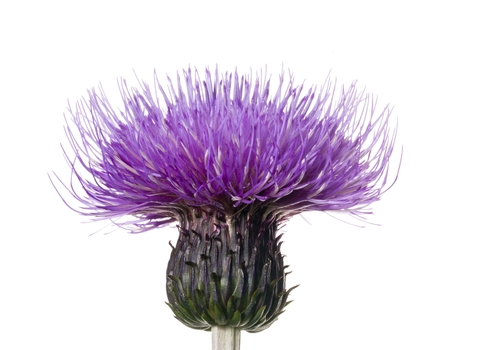
©Niall Benvie/2020VISION
Melancholy thistle
As its name suggests, the Melancholy thistle was once used to treat 'melancholia' (depression). Today, it can be found in upland hay meadows showing off its single, purple, thistle-like flower head.
Enw gwyddonol
Cirsium heterophyllumPryd i'w gweld
July to AugustGwybodaeth am rywogaethau
Categori
Ystadegau
Height: 0.5-1.2mProtected in Northern Ireland under the Wildlife Order, 1985.
